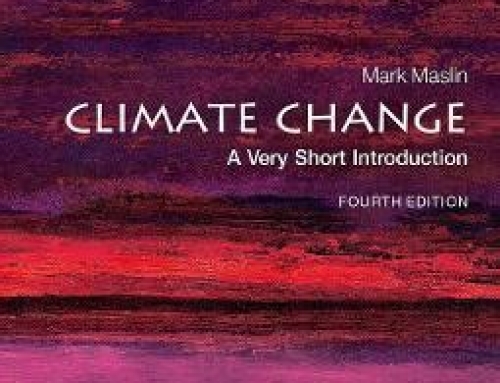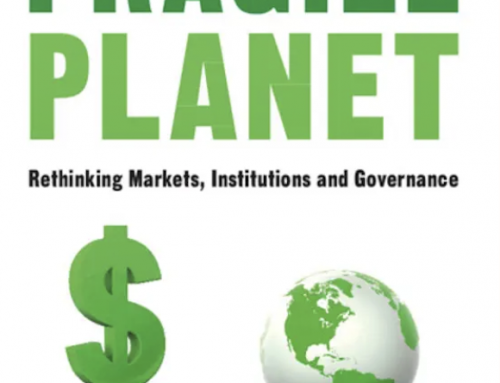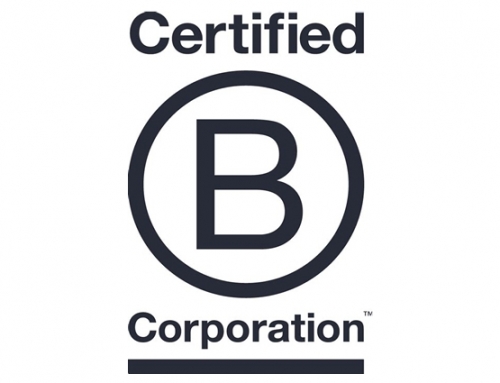PART ONE: A TALE OF TWO COMPANIES
Our story starts at the end of 2019, with equal levels of ethical enthusiasm in two, near identical, boardrooms.
The executive team at Corp A are all over their sustainability plan for 2020. They have really dug deep and established a compelling new ‘moral’ purpose for their company. A reason for being that is greater than the products and services they provide. It’s a new dawn, and everyone is super excited.
“We are humbled by, and stand in solidarity with our friend Greta” states the CEO proudly (although he has never actually met her). “From now on, we shall be a force for good. We will balance healthy profits with a healthy respect for our people and the planet. We will invest in our employees. We will take responsibility for any negative actions towards society and the environment, and we will work tirelessly to change our behaviour and create a better world for everyone.”
It’s a similar picture over at Corp B. They too have felt the shift in sentiment coming from their growing number of more conscious consumers, and internal pressure from employees wanting to work for a company that stands for more than simply making a stack of cash.
“We have spent a lot of time this year talking to customers and employees about what’s important to them. The feedback has been pretty clear – to stop trashing the world’s precious resources, and to respect and protect people and society in general. So we have been asking ourselves, are we doing more harm than good to the planet? And are we doing more harm than good to society? This has highlighted to us that in many areas we need to improve, and we are now fully committed to becoming a better business.”
It’s all very stirring stuff.
PART TWO: HAPPY ETHICAL NEW YEAR
The first two months of 2020 have come and gone. Corp A’s new employee wellness programme has gone down a storm. The external, rather expensive, carbon footprint audit raised some interesting results, which have been diligently written up in a new comprehensive CSR / Energy report. And the marketing department have been overwhelmed by the response to the Jan/Feb ‘plant a tree’ campaign. Everything feels like it’s really coming together.
Over at Corp B, it’s a similar story. Green teams have been established to champion ‘reduce, reuse, recycle’ programmes. The staff canteen has been revamped and now offers more healthy dishes (including vegan), all made from locally-sourced produce. A full supply chain audit is well underway. And plans are being finalised to launch a Buy One GIVE One Free (Pay It Forward) initiative on one of their major product lines.
Momentum is certainly high.
PART THREE: UH OH IT’S THE FIRST QUARTER FINANCIAL RESULTS!
The clocks have barely just sprung forward, and the first quarter financial results are in. Sadly, it’s not looking good. Both companies have struggled to hit targets for the first 3 months of the year. Panic is setting in.
An emergency board meeting is called at Corp A. “What the f*@k is going on here?’ cries the CEO. “These results are shocking and the forecasts look dismal, what the hell are we going to do?” he enquires of his team. There’s an uncomfortable silence. “Well it’s obvious, we will need to start cost-cutting.” says the curmudgeon of a CFO – prompting much nodding from around the boardroom table. “Right, so we’ll need to put an immediate freeze on all training and development” the CEO instructs HR. “And we simply can’t justify the increased Cost of Sale percentage caused by those ethically sourced new product elements, so they’ll have to go.” he continues. “And for god’s sake, cancel the plans for the big community event in the Summer, will you.”
“But what about our commitment to people and the planet?” comes a small voice from the junior executive corner of the room. “What about it?” barks the CEO. “That’ll just have to be put on hold until we see a significant improvement in sales.” “But we promised” responds the junior. “Well we will just have to unpromise then, won’t we! Look, the whole sustainability thing was just a nicety – something we would do if we could, but it hasn’t worked. We’ll go again next year. The staff will understand. And we can continue to run the marketing messages for a while – no one will notice.”
And with that, all of Corp A’s good ethical intentions turned to dust.
The board has also convened over at Corp B. “This is all a bit shit, isn’t it?” says the CEO about the disappointing sales figures. “How are we going to respond?” “There are a number of savings we could make” offers up the CFO eagerly, and goes on to talk about employee benefits, charity initiatives, customer loyalty programmes, etc. “How does that sit with our journey toward being a better business?’ asks the CEO, “Surely we are nothing without integrity.” The boardroom unanimously agrees. “We must think long-term. We’ll need to be more imaginative and think around this differently. Let’s get everyone in the team involved – together we can crack this.”
And you know what, they did.
PART FOUR: RIDING THE STORM
The CEO of Corp A’s words “no-one will notice”, were to haunt him through what proved to be a long and uncomfortable summer of customer discontent. The fake marketing claims were indeed exposed and people were furious. What started as a bit of brand shaming on social media, ended in a full ‘buycott’ of the firm’s highest selling product.
Market share plummeted to an all time low. Share value nosedrived. And even the, somewhat pricey, intervention of a major crisis comms agency failed – it was just too little, too late.
Slashing the L&D budget, plus the other employee broken promises, drove many of the firm’s top talent to update their CVs and go in search of companies that genuinely cared about the 3 Ps. Word spread of a toxic culture and staff churn spiralled out of control. With nothing left in the recruitment budget and their reputation in tatters, key positions simply couldn’t be filled.
By the end of 2020 the organisation was on its knees and struggling to survive. The true definition, if you like, of operating unsustainably.
By contrast, Corp B had ridden out the initial bumpy start and was going from strength to strength. The renewed sense of purpose and togetherness in the team meant employee morale had never been higher. Customer satisfaction and engagement levels were through the roof. And profit levels soared.
THE MORAL OF THE STORY
The moral of the story is that doing good and making money are not incompatible, but you do need to be brave and stick to your principles.
You don’t have to be perfect, but you do need to be honest and transparent.
Change needs to be fully supported from the top down and become a genuine part of a company’s culture.
Trying to ‘greenwash’ employees or customers simply will not work. We live in an age where false claims will be quickly exposed, and magnified by social sharing – sometimes overnight.
Becoming an ethically sound and sustainable business requires action, not just good intentions. But with the right commitment, it is possible to protect people, the planet AND profits.
– THE END –





